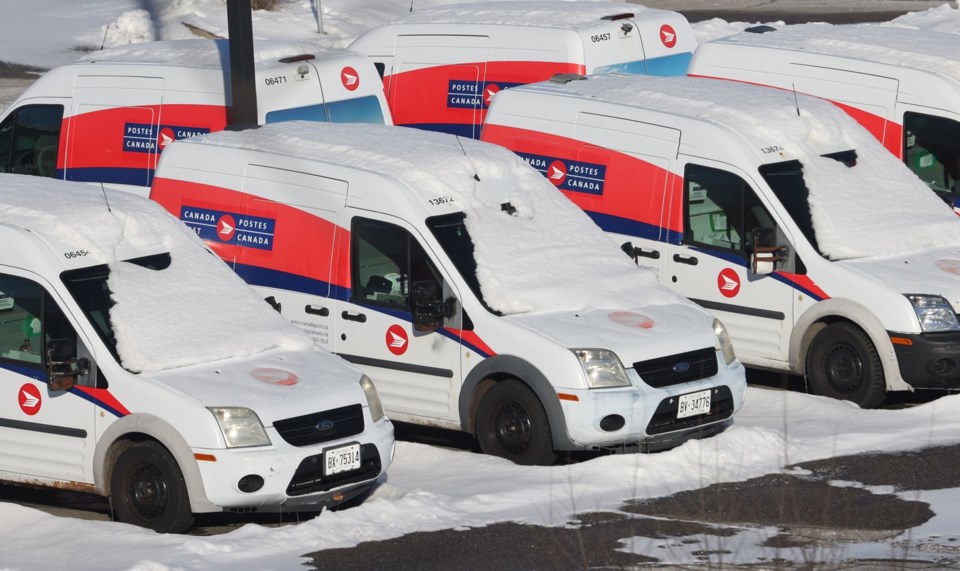MONTREAL — Last week, Justin Trudeau said out loud what many were wondering as the postal strike dragged into its fourth week.
“It is endangering the long-term viability of Canada Post as a service that Canadians rely on,” the prime minister said.
Speaking to reporters in Halifax on Dec. 9, Trudeau warned that the country could “go through a complete Christmas season and everyone figures out alternatives” to the national mail service.
In effect, the strike may have pushed some customers away for good, leaving the cash-strapped Crown corporation in even worse shape and forcing a big shift in strategy.
Set to end on Tuesday following a ministerial directive and its resultant labour board ruling, the month-long work stoppage saw the daily shipment of millions of items ground to a halt.
It prompted tens of thousands of small businesses and individuals to turn to private carriers for delivery of their packages.
Many companies will likely return to Canada Post due to its low shipping rates, but others who find efficient alternatives in regional couriers may never come back, said Ian Lee, an associate professor at Carleton University’s Sprott School of Business.
“Those parcel companies will see this as an opportunity to gain new customers. They may shave their pricing down a little bit to try to be a little bit more competitive,” he said, citing carriers ranging from FedEx and UPS to upstart electric bike couriers.
“Canada Post is going to lose business.”
It already has. According to last year’s annual report, the postal service’s share of the parcel market has plummeted to 29 per cent from 62 per cent before the COVID-19 pandemic, as Amazon and other competitors seized on skyrocketing demand for next-day doorstep deliveries.
While the market for package delivery has ballooned in recent years, Canada Post’s shipments have shrunk — by nearly a quarter since 2020 to 296 million parcels in 2023.
Demand for letter mail may also wither. Last year, the average household received two letters per week, down from seven per week in 2006.
The postal shutdown will only hasten a decades-long migration online for old-fashioned mailbox fodder ranging from Christmas cards to cheques and invoices, Lee said.
“This is going to accelerate the digitization of everything. Businesses will say, ‘Gee whiz, I don’t want to get stuck like that again,’” he said. “Canada Post will lose more customers.”
Nonetheless, mail is poised to start moving again on Tuesday after Labour Minister Steven MacKinnon directed the federal labour board to order employees back to work if the tribunal determined a deal wasn’t reachable by year’s end. The minister posted on X Monday that the board had declared an impasse and therefore a resumption of operations.
In the meantime, MacKinnon said he will appoint an industrial inquiry commission to look into the “structural issues of the conflict” and come up with recommendations by May 15 on how a new agreement can be secured.
"The inquiry will have a broad scope, as it will examine the entire structure of Canada Post from both a customer and business model standpoint, considering the challenging business environment now facing Canada Post," he said Friday.
This report by The Canadian Press was first published Dec. 16, 2024.
Christopher Reynolds, The Canadian Press




